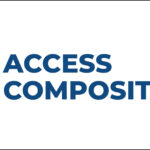Huawei, a leading global ICT solutions provider, has announced that it is working with The University of Manchester to explore the uses of graphene to develop the next generation of high-performance technologies in the ICT field. The project which will initially run for two years, will explore ways of using graphene’s revolutionary applications in consumer electronics and mobile communication devices.
Chancellor George Osborne said ”It was a great privilege to officially open the National Graphene Institute earlier this year as part of a £90m Government investment in graphene research and development. The deal between Huawei and the NGI is important recognition of how the UK is leading the way in graphene technology and another example of how science and innovation is playing a key role in building the Nothern Powerhouse.”
James Baker, Graphene Business Director at The University of Manchester, said: “Working with a leading global technology brand gives us the opportunity to take graphene from the lab to everyday products. We are looking forward to working with Huawei over the next couple of years to develop new materials for consumer electronics and mobile communication devices.”
Chen Lifang, Board Director and Senior Vice-President, Huawei, said: “The UK is at the forefront of world-leading R&D capability in fundamental technology and we’re excited to be working with The University of Manchester through Huawei’s HIRP FLAGSHIP program on a project that has the potential to explore so many advanced technologies. As the home of graphene, The University of Manchester has enormous expertise and the best facilities for working with the material. We are confident our partnership will help to build a better connected world and contribute to the future of the ICT industry.”
Graphene, a one-atom thick form of graphite, is the world’s thinnest and most conductive material and is expected to revolutionise the technology sector. The National Graphene Institute is a world-leading centre of graphene research and commercialisation, where academics and their industrial partners can work side by side on the applications of tomorrow. The University currently has more than 40 commercial partners and more than 235 researchers on graphene and related 2D materials.











